Keep Current with the Latest in Cell Biology Research
Block title
PR Inhibition Stimulates G6PD Expression to Enhance Malignancy in Luminal Breast Cancer
[Cell Death & Disease] Researchers silenced progesterone receptor expression in the luminal breast cancer cell lines, MCF7 and T47D, which led to accelerated proliferation and pentose phosphate pathway activity with G6PD expression.
PAK2 Promotes CTC Cluster Formation by Phosphorylating E-Cadherin to Enhance Cell-Cell Adhesion in Breast Cancer
[Breast Cancer Research] Scientists revealed that PAK2 promotes circulating tumor cell cluster formation and breast cancer metastasis by enhancing E-cadherin-mediated cell-cell adhesion.
Targeting Cell Surface GRP78-CD44v Interaction Suppresses Cell Migration in Triple-Negative Breast Cancer Cells
[Scientific Reports] Investigators reported that over 70% of TNBC cells express cell surface GRP78 (csGRP78). MDA-MB-231 cells predominantly exhibit a distinct unipolar morphology, with csGRP78 prominently co-localizing with the variant isoform of CD44.
Targeting Secreted PLA Interactions with EGFR and Vimentin to Arrest Prostate Tumor Growth
[Cell Death & Disease] Scientists highlighted that the secreted phospholipase A2 human group IIA (contributes to prostaste cancer pathology primarily through specific protein-protein interactions.
High-Salt Diet Induces Immune-Independent Re-Differentiation, Metabolic Shut Down, and Cell Cycle Arrest of Melanoma
[Cell Death & Disease] Investigators showed that a high salt diet inhibits melanoma growth independent of sodium accumulation and immune cells in skin and lung.
Interaction of lncRNA LENT with DHX36 Regulates Translation and Suppresses Autophagy in Melanoma
[Cell Death & Disease] The authors characterized LINC00520 (LENT) regulated by microphthalmia-associated transcription factor and strongly expressed in melanocytic melanoma cells. LENT is essential for the proliferation and survival of cultured melanocytic melanoma cells and xenograft tumors.
Etoposide Activates CD8 T Cell Anti-Tumor Immunity in Osteosarcoma through MHC I Upregulation via Tumor-Secreted IL-33 Mediated Signaling
[Journal for Immunotherapy of Cancer] Scientists revealed the molecular mechanism underlying etoposide-activated CD8+ T cell anti-tumor immunity. The combination of etoposide and anti-PD-1 antibody has the potential to benefit patients with advanced osteosarcoma.
Characterisation of Human Pancreatic Mesenchymal Stromal Cells in Type 1 Diabetes
[Diabetologia] The authors determined the number, density and islet-protective phenotype of pancreatic MSCs in situ in individuals with and without type 1 diabetes.
Next-Generation CAR-T Cells Design: Leveraging Tumor Features for Enhanced Efficacy
[Molecular Cancer] The authors discuss the combinatorial approaches aimed at improving antigen recognition, functional adaptability, and antitumor response, thereby expanding the therapeutic impact of CAR-T cells in solid-tumor settings.
Signal Transducer and Activator of Transcription (STAT) Proteins Regulate Mucosal-Associated Invariant T (MAIT) Cell Function
[Immunology] Scientists highlight the critical roles of STAT1, STAT3, STAT5 and HIF1α in regulating mucosal-Associated Invariant T (MAIT) cell effector functions.
Type I and II Interferons Drive Abacavir Hypersensitivity via Treg Suppression and T-Cell Enhancement in Immunocompetent HLA-Transgenic Mice
[Allergy] Scientists highlight the distinct roles of IFN-α and IFN-γ in modulating an immune response against abacavir (APC), with IFN-γ increasing APC activity and IFN-α impairing Treg-mediated regulation in immune competent mice.
The LRRK2 P1446L Mutation Triggers Dopaminergic Neurodegeneration via DAPK1-Mediated Microglial Neuroinflammation and Neuronal Apoptosis
[NPJ Parkinson'S Disease] Researchers designed LRRK2-P1446L mutant mice and demonstrated that the novel LRRK2-P1446L mutation drives neurodegeneration through death-associated protein kinase 1 (DAPK1) dysregulation.

 Cancer Stem Cell News
Cancer Stem Cell News Cell Therapy News
Cell Therapy News Dermal Cell News
Dermal Cell News Endothelial Cell News
Endothelial Cell News ESC & iPSC News
ESC & iPSC News Extracellular Matrix News
Extracellular Matrix News Hematopoiesis News
Hematopoiesis News Hepatic Cell News
Hepatic Cell News Human Immunology News
Human Immunology News Immune Regulation News
Immune Regulation News
 Intestinal Cell News
Intestinal Cell News Mammary Cell News
Mammary Cell News Mesenchymal Cell News
Mesenchymal Cell News Muscle Cell News
Muscle Cell News Neural Cell News
Neural Cell News Organoid News
Organoid News Pancreatic Cell News
Pancreatic Cell News Prostate Cell News
Prostate Cell News Pulmonary Cell News
Pulmonary Cell News
